As a guitarist, finding the right gear is crucial to achieving the perfect sound. From amplifiers to pedals to strings, there are countless options available, and it can be overwhelming to navigate the world of guitar gear. That’s why we’ve compiled a list of the 10 most commonly used guitar gear to help you understand the essential pieces of equipment every guitarist needs.
The Top 10 Guitar Gear Guide
Whether you’re a beginner or a seasoned pro, this guide will provide you with everything you need to know about guitar amps, pedals, tuners, strings, picks, cases, straps, cables, stands, and capos.
Get ready to take your playing to the next level with this comprehensive guide to the top 10 guitar gear.
#1 – Guitar Amplifiers – The Powerhouse of Your Sound: Why a Guitar Amplifier is Essential
Guitar amplifiers are the powerhouse of your sound as a guitarist. They take the sound produced by your guitar and amplify it to a level that can be heard by a large audience. Choosing the right guitar amplifier is crucial to achieving the tone and sound you’re looking for in your playing. To help you find the right amplifier for your needs, we’ve reviewed the best options for you.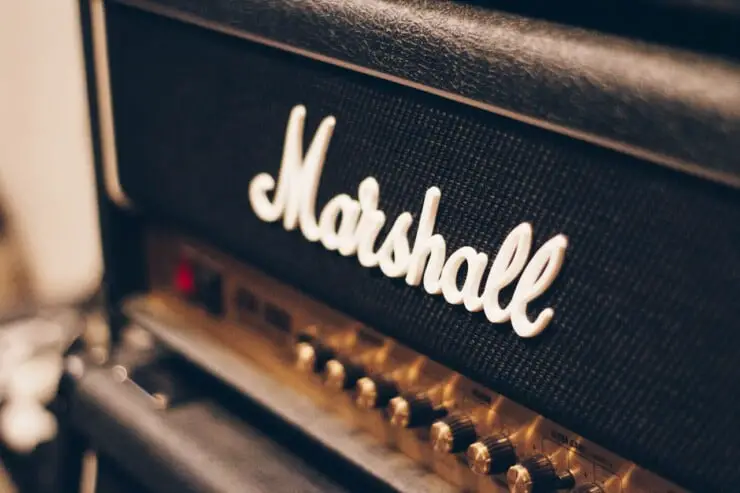
Guitar Amps
A guitar amp is an essential piece of equipment for any guitarist. They come in a range of different sizes, styles, and power levels, so it’s important to choose the right one for your needs. We’ve tested and reviewed the best guitar amps on the market, so you can find the perfect one for your playing style and budget. Check out our review of the best guitar amps and take your playing to the next level.
Practice Amps
If you’re looking for a practice amp, we have you covered. A practice amp is a great option for home use or small gigs, and we’ve tested and reviewed the best practice amps on the market. Our reviews cover a range of different brands and models, so you can find the one that best suits your playing style and budget. Check out our review of the best practice amps and take your practice sessions to the next level.
Tube Amps
For guitarists who want to achieve a classic tone, a tube amp is the way to go. Tube amps use vacuum tubes to amplify the sound produced by your guitar, resulting in a warm and natural tone. We’ve reviewed the best tube amps on the market, so you can find the perfect one for your playing needs. Check out our review of the best tube amps and start playing with a classic tone today.
Small Tube Amps
If you’re looking for a smaller tube amp, we’ve got you covered. Small tube amps offer the same great tone as their larger counterparts, but in a more compact and portable package. We’ve reviewed the best small tube amps on the market, so you can find the perfect one for your needs. Check out our review of the best small tube amps and start playing with a classic tone on a smaller scale.
Small Guitar Amps
A small guitar amp is another great option for home use or small gigs. They’re compact, portable, and perfect for guitarists who want a powerful but convenient amp. We’ve tested and reviewed the best small guitar amps on the market, so you can find the one that best suits your playing style and budget. Check out our review of the best small guitar amp and take your playing to the next level.
Guitar Preamps
A guitar preamp is a great way to shape your sound before it goes into your amplifier. Preamps allow you to add different types of distortion, tone shaping, and other effects to your sound. We’ve tested and reviewed the best guitar preamps on the market, so you can find the perfect one for your needs. Check out our review of the best guitar preamps and start shaping your sound today.
Mini Guitar Amps
If you’re looking for a small and portable amp, a mini guitar amp is the way to go. These battery-powered amps are perfect for practice sessions or impromptu jam sessions. We’ve tested and reviewed the best mini guitar amps on the market, so you can find the perfect one for your needs. Check out our review of the best mini guitar amps and start playing on the go.
Battery-Powered Guitar Amps
Battery-powered guitar amps are perfect for guitarists who need to play on the go. Whether you’re playing on the street, in a park, or on the subway, these amps will help you achieve the sound you’re looking for. We’ve tested and reviewed the best battery-powered guitar amps on the market, so you can find the perfect one for your needs. Check out our review of the best battery-powered guitar amps and start playing anywhere you want.
Jazz Amps
For jazz guitarists, a dedicated jazz amp can make all the difference. Jazz amps are designed to produce a clean and warm sound, with plenty of headroom for playing at higher volumes. We’ve tested and reviewed the best jazz amps on the market, so you can find the perfect one for your playing needs. Check out our review of the best jazz amps and start playing with a smooth and refined tone.
Our Guitar Amp Reviews and Guides
We offer a range of guides and reviews to help you choose the right guitar amplifier for your needs. Whether you’re a beginner or a seasoned pro, our guides and reviews cover a range of different types of amplifiers, from practice amps to tube amps to preamps. We also cover a range of brands and models, so you can find the one that best suits your playing style and budget.
In addition to our reviews of specific types of guitar amplifiers, we also offer a range of general guides and tips to help you get the most out of your amplifier. From maintenance and cleaning tips to advice on how to achieve different types of tones and sounds, our guitar amplifier guides cover everything you need to know to take your playing to the next level.
So, why not check out our guitar amplifier guides and reviews today and find the perfect amplifier for your needs? Whether you’re a beginner or a seasoned pro, our website has something for everyone.
#2 – Guitar Pedals – Adding Texture and Depth: The Role of Guitar Pedals in Your Playing
Guitar pedals are an essential tool for any guitarist looking to add texture and depth to their playing. They allow you to manipulate your sound in unique and interesting ways, whether you’re looking to add distortion and overdrive or create complex soundscapes with looping and modulation effects. In this section, we’ll explore the different types of guitar pedals available and highlight some of the best options on the market.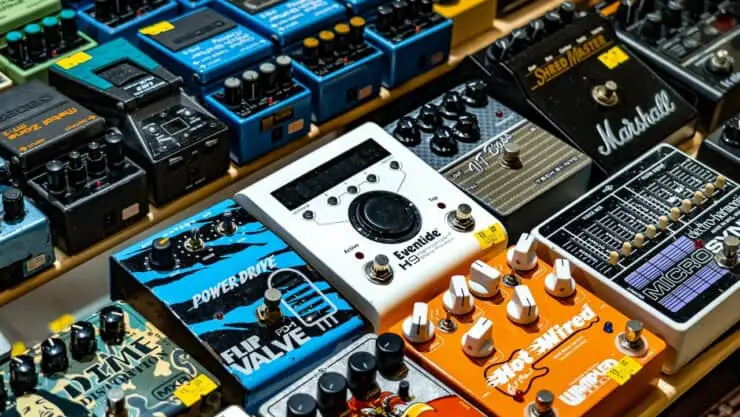
Distortion Pedal
Distortion pedals are a staple of rock and metal guitarists everywhere. They add grit and sustain to your sound, allowing you to create heavy, distorted tones. We’ve reviewed the best distortion pedals on the market, so you can find the perfect one for your playing style and genre. Check out our review of the best distortion pedals and take your playing to the next level.
Overdrive Pedal
Overdrive pedals are another popular choice for guitarists looking to add some grit and sustain to their sound. They produce a more natural and organic distortion than distortion pedals, making them a great choice for blues and classic rock. We’ve tested and reviewed the best overdrive pedals on the market, so you can find the perfect one for your playing needs. Check out our review of the best overdrive pedals and start playing with a classic tone today.
Phaser Pedal
Phaser pedals are modulation effects that add a sweeping, swirling sound to your playing. They’re often used in funk and psychedelic rock, but can add interest and texture to any style of playing. We’ve reviewed the best phaser pedals on the market, so you can find the perfect one for your needs. Check out our review of the best phaser pedals and start playing with a new dimension of sound.
Noise Gate Pedal
Noise gate pedals are designed to eliminate unwanted noise and hum from your playing. They’re particularly useful for high-gain playing, where unwanted noise can become a problem. We’ve tested and reviewed the best noise gate pedals on the market, so you can find the perfect one for your needs. Check out our review of the best noise gate pedals and start playing with a cleaner, more focused sound.
Looper Pedal
Looper pedals allow you to record and loop your playing, creating complex soundscapes and layered compositions. They’re a great tool for solo performances or for creating new ideas and melodies. We’ve tested and reviewed the best looper pedals on the market, so you can find the perfect one for your needs. Check out our review of the best looper pedals and start experimenting with new sounds.
Chorus Pedal
Chorus pedals add a shimmering, ethereal quality to your sound. They’re often used in pop and indie rock, but can add interest and texture to any style of playing. We’ve reviewed the best chorus pedals on the market, so you can find the perfect one for your needs. Check out our review of the best chorus pedals and start playing with a new dimension of sound.
Compressor Pedal
Compressor pedals are used to even out the dynamics of your playing, resulting in a more consistent and focused sound. They’re particularly useful for fingerstyle playing or for playing with a pick. We’ve tested and reviewed the best compressor pedals on the market, so you can find the perfect one for your needs. Check out our review of the best compressor pedals and start playing with a more polished sound.
Octave Pedal
Octave pedals add a lower or higher octave to your playing, creating a more complex and interesting sound. They’re often used in funk and metal, but can add interest and texture to any style of playing. We’ve reviewed the best octave pedals on the market, so you can find the perfect one for your needs. Check out our review of the best octave pedals and start experimenting with new sounds and tones.
Vibrato Pedal
Vibrato pedals add a pulsating, wobbling effect to your playing. They’re often used in blues and jazz, but can add interest and texture to any style of playing. We’ve tested and reviewed the best vibrato pedals on the market, so you can find the perfect one for your needs. Check out our review of the best vibrato pedals and start playing with a new dimension of sound.
Pedalboard
A pedalboard is a great way to keep your pedals organized and easily accessible. They come in a range of sizes and styles, so you can find the one that best suits your needs. We’ve reviewed the best pedalboards on the market, so you can find the perfect one for your setup. Check out our review of the best pedalboards and start organizing your pedals like a pro.
Our Guitar Pedal Reviews and Guides
We offer a range of guides and reviews to help you choose the right guitar pedals for your needs. Whether you’re a beginner or a seasoned pro, our guides and reviews cover a range of different types of pedals, from distortion and overdrive to modulation and time-based effects. We also cover a range of brands and models, so you can find the one that best suits your playing style and budget.
In addition to our reviews of specific types of guitar pedals, we also offer a range of general guides and tips to help you get the most out of your pedals. From signal chain advice to pedalboard layout tips, our guitar pedal guides cover everything you need to know to take your playing to the next level.
So, why not check out our guitar pedal guides and reviews today and find the perfect pedals for your needs? Whether you’re a beginner or a seasoned pro, our website has something for everyone.
#3 – Guitar Tuners – The Foundation of Your Sound: Why Every Guitarist Needs a Tuner
As a guitarist, having a properly tuned instrument is essential to achieving the best possible sound. A guitar tuner is an important tool that helps you ensure your instrument is in tune and ready to play. In this section, we’ll cover the different types of guitar tuners available and why every guitarist needs one.

Types of Guitar Tuners
There are several types of guitar tuners available, each with its own advantages and disadvantages. It’s important to choose the right type of tuner for your needs to ensure your guitar is always in tune. Here are the most common types of guitar tuners:
Clip-On Tuners
Clip-on tuners attach to the headstock of your guitar and detect vibrations to determine the pitch of each string. They’re easy to use and can be used in noisy environments since they don’t rely on picking up sound. They’re also very accurate and affordable.
Pedal Tuners
Pedal tuners are often used by gigging guitarists who need to tune their guitar quickly and easily on stage. They’re larger than clip-on tuners and are placed on a pedalboard with other effects pedals. They’re easy to use and offer accurate tuning with the added convenience of being able to tune your guitar hands-free.
Handheld Tuners
Handheld tuners are small devices that can be held in your hand and detect the pitch of each string. They’re portable and easy to use, making them a great option for practicing at home or on the go.
Smartphone Apps
There are several smartphone apps available that can be used as guitar tuners. They’re convenient and often free, but may not be as accurate as dedicated tuners. They also require a quiet environment to work properly.
Importance of Having a Guitar Tuner
Having a guitar tuner is essential for any guitarist, regardless of their level of experience. Tuning your guitar regularly ensures that it sounds its best and helps you play in tune with other musicians. Here are some reasons why every guitarist needs a tuner:
Accuracy
Guitar tuners offer a high level of accuracy, ensuring that each string is tuned to the correct pitch. This is important for achieving the best possible sound from your guitar.
Convenience
Tuning your guitar with a tuner is quick and easy, allowing you to spend more time playing and less time tuning. This is especially important if you’re playing live or recording in a studio.
Training your Ear
Using a tuner can help train your ear to recognize when your guitar is out of tune. This can help you develop a better sense of pitch and intonation, improving your overall playing ability.
Preventing Damage
Playing an out of tune guitar can cause unnecessary stress on the strings and other parts of the instrument, potentially leading to damage or even breaking. Tuning your guitar regularly helps prevent this from happening.
Tips for Using a Guitar Tuner
To get the most out of your guitar tuner, here are some tips to keep in mind:
Use the Correct Tuning Mode
Make sure you’re using the correct tuning mode for your instrument. Some tuners are designed specifically for guitar, while others can be used for a range of instruments.
Tune to the Correct Pitch
Make sure you’re tuning each string to the correct pitch. This will ensure that your guitar sounds its best and is in tune with other musicians.
Check Regularly
Tune your guitar regularly, ideally every time you pick it up to play. This will ensure that it’s always in tune and ready to play.
Consider Upgrading
If you’re using a low-quality tuner or smartphone app, consider upgrading to a more accurate and reliable tuner. A high-quality tuner can make a big difference in the sound and performance of your guitar.
Our Guitar Tuner Reviews and Guides
We offer a range of guides and reviews to help you choose the right guitar tuner for your needs. Whether you’re a beginner or a seasoned pro, our guides and reviews cover a range of different types of tuners, from clip-on tuners to pedal tuners to handheld tuners.
We’ve tested and reviewed the best tuners on the market, so you can find the perfect one for your playing style and budget. Check out our reviews of the best guitar tuner and start playing with a perfectly tuned instrument.
In addition to our reviews of specific types of guitar tuners, we also offer a range of general guides and tips to help you get the most out of your tuner. From advice on how to use your tuner to tips for tuning in noisy environments, our guitar tuner guides cover everything you need to know to take your playing to the next level.
So, why not check out our guitar tuner guides and reviews today and find the perfect tuner for your needs? Whether you’re a beginner or a seasoned pro, our website has something for everyone.
#4 – Guitar Strings – The Lifeblood of Your Guitar: Why You Need to Pay Attention to Strings
Guitar strings are an essential part of any guitar setup. They’re the lifeblood of your instrument, responsible for creating the sound and tone that you hear. In this section, we’ll cover the different types of guitar strings available and why it’s important to pay attention to your strings.
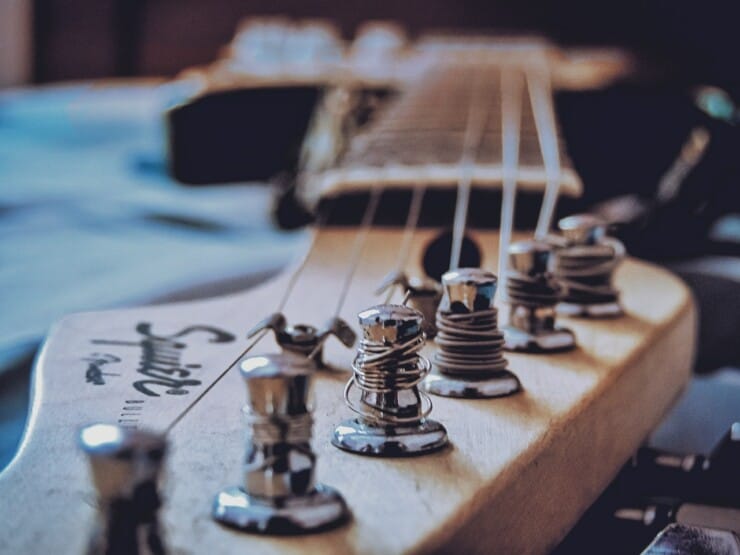
Types of Guitar Strings
There are several types of guitar strings available, each with its own unique sound and feel. It’s important to choose the right type of strings for your playing style and genre to ensure your guitar sounds its best. Here are the most common types of guitar strings:
Steel Strings
Steel strings are the most common type of guitar string and are often used in acoustic and electric guitars. They offer a bright, crisp sound and are ideal for playing rock, pop, and country music.
Nylon Strings
Nylon strings are commonly used in classical and flamenco guitars. They offer a softer, warmer sound and are ideal for playing fingerstyle and classical music.
Coated Strings
Coated strings are designed to last longer and resist corrosion. They’re a great choice if you’re looking for strings that will last longer and maintain their sound over time.
Flatwound Strings
Flatwound strings have a flat surface, giving them a smoother feel and producing a warmer, mellow sound. They’re often used in jazz and blues music.
Roundwound Strings
Roundwound strings have a round surface, giving them a brighter, more vibrant sound. They’re often used in rock and metal music.
Importance of Guitar Strings
The type and quality of your guitar strings can have a big impact on the sound and playability of your instrument. Here are some reasons why it’s important to pay attention to your guitar strings:
Sound
The type of strings you use can significantly impact the sound of your guitar. Choosing the right strings for your playing style and genre can help you achieve the best possible sound.
Playability
The feel and tension of your strings can impact the playability of your guitar. Choosing the right strings for your playing style can help make playing more comfortable and enjoyable.
Durability
Using high-quality strings can help prolong the life of your instrument and reduce the frequency of string changes. This can save you time and money in the long run.
Tips for Choosing Guitar Strings
To get the most out of your guitar strings, here are some tips to keep in mind:
Consider Your Playing Style and Genre
When choosing guitar strings, consider your playing style and genre. Different types of strings are better suited for different styles of music.
Experiment with Different Brands and Types
Don’t be afraid to experiment with different brands and types of strings to find the ones that work best for you. It’s important to find strings that sound and feel good to you.
Change Strings Regularly
Change your guitar strings regularly to ensure they sound their best and maintain their playability. The frequency of string changes will depend on your playing habits and the type of strings you’re using.
Properly Care for Your Strings
Properly caring for your strings can help prolong their life and maintain their sound and playability. Wiping them down after playing and using a string cleaner can help keep them in top condition.
Our Guitar Strings Reviews and Guides
We offer a range of guides and reviews to help you choose the right guitar strings for your needs. Whether you’re a beginner or a seasoned pro, our guides and reviews cover a range of different types of strings, from steel and nylon to coated and flatwound.
We’ve tested and reviewed the best guitar strings on the market, so you can find the perfect ones for your playing style and budget. Check out our reviews of the best guitar strings and start playing with the sound and feel that’s right for you.
In addition to our reviews of specific types of guitar strings, we also offer a range of general guides and tips to help you get the most out of your strings. From advice on how to choose the right strings to tips for changing strings and proper care, our guitar strings guides cover everything you need to know to take your playing to the next level.
So, why not check out our guitar strings guides and reviews today and find the perfect strings for your needs? Whether you’re a beginner or a seasoned pro, our website has something for everyone.
#5 – Guitar Picks – The Unsung Hero: Why Guitar Picks Are More Important Than You Think
Guitar picks, also known as plectrums, may seem like a small and insignificant part of your guitar setup, but they play a crucial role in the sound and feel of your playing. In this section, we’ll cover the different types of guitar picks available and why they’re more important than you might think.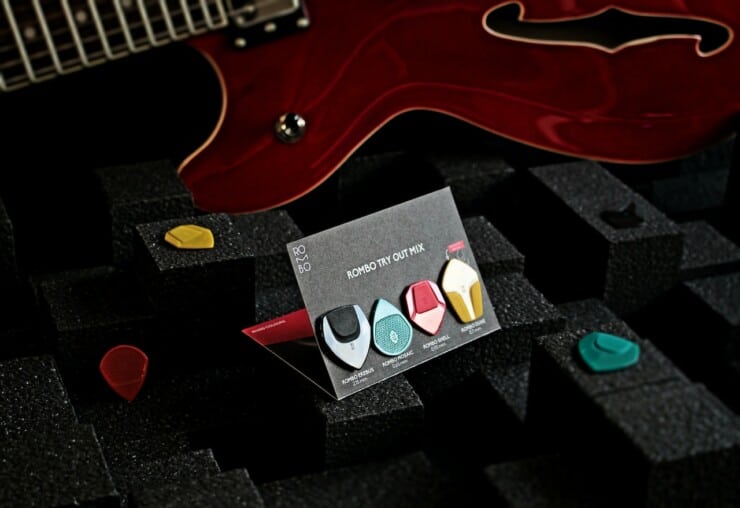
Types of Guitar Picks
There are several types of guitar picks available, each with its own unique sound and feel. It’s important to choose the right type of pick for your playing style and genre to ensure you get the best possible sound. Here are the most common types of guitar picks:
Plastic Picks
Plastic picks are the most common type of pick and are often used in a variety of playing styles and genres. They’re affordable, durable, and offer a bright, punchy sound.
Nylon Picks
Nylon picks are similar to plastic picks but offer a softer, warmer sound. They’re often used in jazz and acoustic playing.
Metal Picks
Metal picks are made from materials like brass, copper, and stainless steel. They offer a bright, metallic sound and are often used in heavy metal and hard rock.
Wooden Picks
Wooden picks are made from materials like maple and rosewood. They offer a warm, natural sound and are often used in acoustic playing.
Importance of Guitar Picks
The type of guitar pick you use can have a big impact on the sound and feel of your playing. Here are some reasons why guitar picks are more important than you might think:
Tone
The type of pick you use can significantly impact the tone of your guitar. Choosing the right pick for your playing style and genre can help you achieve the best possible sound.
Feel
The size, shape, and material of your pick can impact the feel of your playing. Choosing the right pick can make playing more comfortable and enjoyable.
Technique
Different picks are better suited for different playing techniques. Choosing the right pick can help you achieve the playing style and technique you want.
Tips for Choosing Guitar Picks
To get the most out of your guitar picks, here are some tips to keep in mind:
Experiment with Different Picks
Don’t be afraid to experiment with different types of picks to find the ones that work best for you. It’s important to find picks that sound and feel good to you.
Consider Your Playing Style and Genre
When choosing guitar picks, consider your playing style and genre. Different types of picks are better suited for different styles of music.
Choose the Right Thickness
The thickness of your pick can impact the tone and feel of your playing. Thicker picks are often used for heavy strumming and picking, while thinner picks are better suited for lighter playing.
Properly Grip Your Pick
The way you grip your pick can impact the feel and technique of your playing. Experiment with different grip styles to find the one that works best for you.
Our Guitar Pick Reviews and Guides
We offer a range of guides and reviews to help you choose the right guitar picks for your needs. Whether you’re a beginner or a seasoned pro, our guides and reviews cover a range of different types of picks, from plastic and nylon to metal and wooden.
We’ve tested and reviewed the best guitar picks on the market, so you can find the perfect ones for your playing style and budget. Check out our reviews of the best guitar picks and start playing with the sound and feel that’s right for you.
In addition to our reviews of specific types of guitar picks, we also offer a range of general guides and tips to help you get the most out of your picks. From advice on how to choose the right pick to tips for proper grip and technique, our guitar pick guides cover everything you need to know to take your playing to the next level.
So, why not check out our guitar pick guides and reviews today and find the perfect picks for your needs? Whether you’re a beginner or a seasoned pro, our website has something for everyone.
#6 – Guitar Cases – Protecting Your Investment: Why a Guitar Case Is a Must-Have
A guitar case may not seem like the most exciting piece of gear, but it’s an essential part of any guitar setup. A good guitar case can help protect your instrument from damage during transport and storage. In this section, we’ll cover the different types of guitar cases available and why they’re a must-have for any guitarist.
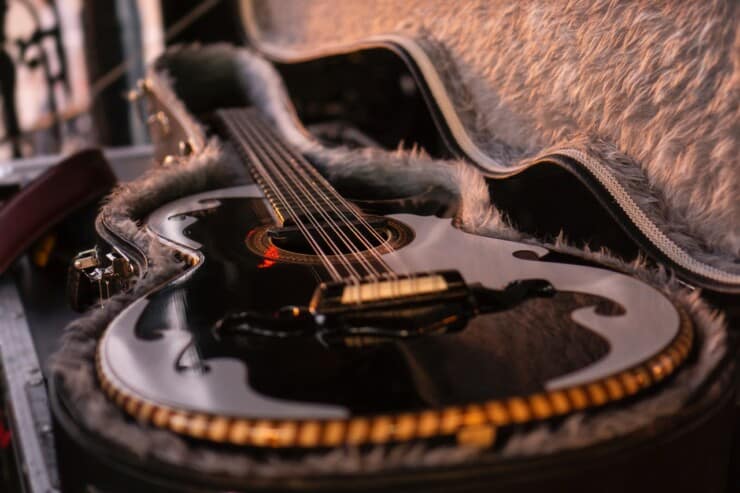
Types of Guitar Cases
There are several types of guitar cases available, each with its own unique features and benefits. It’s important to choose the right type of case for your needs to ensure your guitar stays safe and secure. Here are the most common types of guitar cases:
Hardshell Cases
Hardshell cases are made from durable materials like plastic and fiberglass. They offer the best protection for your guitar and are ideal for touring musicians and frequent travelers.
Soft Cases
Soft cases are made from materials like nylon and polyester. They offer lightweight and affordable protection for your guitar and are ideal for casual players and students.
Gig Bags
Gig bags are similar to soft cases but offer less protection. They’re lightweight and easy to carry, making them ideal for short trips and local gigs.
Importance of Guitar Cases
A good guitar case is essential for protecting your investment. Here are some reasons why a guitar case is a must-have for any guitarist:
Protection
A guitar case helps protect your instrument from damage during transport and storage. It can prevent scratches, dings, and other types of damage that can reduce the value and playability of your guitar.
Convenience
A guitar case makes it easy to transport your instrument to gigs, rehearsals, and other events. It keeps your guitar safe and secure while you’re on the go.
Longevity
Using a guitar case can help prolong the life of your instrument. It can prevent wear and tear and help your guitar stay in top condition for years to come.
Tips for Choosing a Guitar Case
To get the most out of your guitar case, here are some tips to keep in mind:
Consider Your Needs
When choosing a guitar case, consider your needs. Do you need a hardshell case for touring or a soft case for casual playing? Choose a case that meets your specific needs.
Look for Quality
Choose a guitar case made from high-quality materials that will offer the best protection for your instrument. Look for features like padding and reinforcement to keep your guitar safe.
Choose the Right Size
Make sure you choose a guitar case that’s the right size for your instrument. A case that’s too small or too big can leave your guitar vulnerable to damage.
Check the Warranty
Make sure the guitar case you choose comes with a warranty. This will ensure that you can get a replacement or repair if the case is damaged or doesn’t meet your expectations.
Our Guitar Case Reviews and Guides
We offer a range of guides and reviews to help you choose the right guitar case for your needs. Whether you’re a beginner or a seasoned pro, our guides and reviews cover a range of different types of cases, from hardshell and soft to gig bags.
We’ve tested and reviewed the best guitar cases on the market, so you can find the perfect one for your playing style and budget. Check out our reviews of the best guitar cases and start protecting your investment today.
In addition to our reviews of specific types of guitar cases, we also offer a range of general guides and tips to help you get the most out of your case. From advice on how to pack your case to tips for maintaining your case, our guitar case guides cover everything you need to know to keep your instrument safe and secure.
So, why not check out our guitar case guides and reviews today and find the perfect case for your needs? Whether you’re a beginner or a seasoned pro, our website has something for everyone.
#7 – Guitar Straps – Your Hands-Free Helper: How a Guitar Strap Enhances Your Playing
A guitar strap may seem like a simple accessory, but it plays a crucial role in your playing experience. A good guitar strap can help you play comfortably for longer periods, improve your technique, and enhance your overall playing experience. In this section, we’ll cover the different types of guitar straps available and why they’re an essential part of any guitar setup.
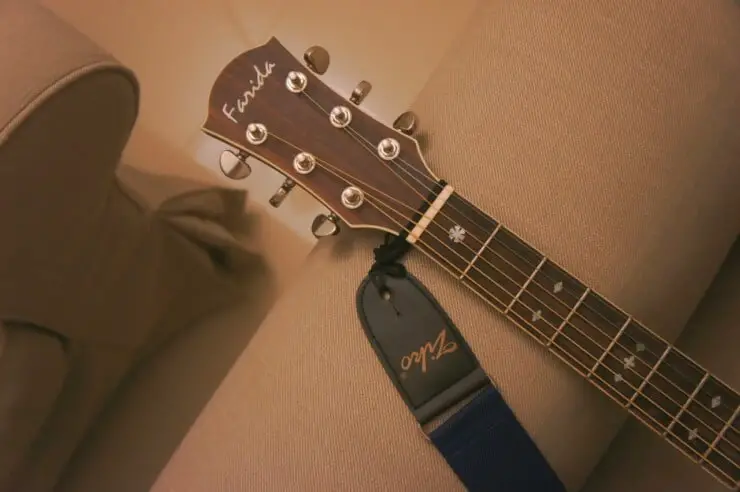
Types of Guitar Straps
There are several types of guitar straps available, each with its own unique features and benefits. It’s important to choose the right type of strap for your playing style and comfort to ensure you get the most out of your playing experience. Here are the most common types of guitar straps:
Nylon Straps
Nylon straps are the most common type of guitar strap and are often used in a variety of playing styles and genres. They’re affordable, durable, and easy to adjust.
Leather Straps
Leather straps offer a classic, stylish look and are often used in rock and blues playing. They’re durable and comfortable but can be more expensive than nylon straps.
Padded Straps
Padded straps offer extra comfort and support, making them ideal for players who play for long periods. They’re often used in heavy metal and hard rock playing.
Suede Straps
Suede straps offer a comfortable, soft feel and are often used in acoustic playing. They’re durable and stylish but can be more expensive than nylon straps.
Importance of Guitar Straps
A good guitar strap is essential for improving your playing experience. Here are some reasons why a guitar strap is an important part of any guitarist’s setup:
Comfort
A guitar strap can help you play comfortably for longer periods, reducing the risk of back and neck pain.
Technique
A guitar strap can help you maintain proper playing technique, improving your playing and reducing the risk of injury.
Style
A guitar strap can be a stylish accessory, adding to your overall stage presence and helping you stand out from the crowd.
Tips for Choosing a Guitar Strap
To get the most out of your guitar strap, here are some tips to keep in mind:
Consider Your Comfort
When choosing a guitar strap, consider your comfort. Choose a strap that feels comfortable and secure to wear for long periods.
Choose the Right Width
Make sure you choose a guitar strap that’s the right width for your playing style and comfort. A wider strap offers more support, while a thinner strap is more lightweight.
Look for Durability
Choose a guitar strap made from high-quality materials that will last for years. Look for features like reinforced stitching and durable hardware.
Choose the Right Length
Make sure you choose a guitar strap that’s the right length for your playing style and height. A shorter strap is ideal for players who play higher on the neck, while a longer strap is ideal for players who play lower.
Our Guitar Strap Reviews and Guides
We offer a range of guides and reviews to help you choose the right guitar strap for your needs. Whether you’re a beginner or a seasoned pro, our guides and reviews cover a range of different types of straps, from nylon and leather to padded and suede.
We’ve tested and reviewed the best guitar straps on the market, so you can find the perfect one for your playing style and budget. Check out our reviews of the best guitar straps and start playing with the comfort and style that’s right for you.
In addition to our reviews of specific types of guitar straps, we also offer a range of general guides and tips to help you get the most out of your strap. From advice on how to adjust your strap properly to tips for maintaining your strap, our guitar strap guides cover everything you need to know to take your playing to the next level.
So, why not check out our guitar strap guides and reviews today and find the perfect strap for your needs? Whether you’re a beginner or a seasoned pro, our website has something for everyone.
#8 – Guitar Cables – The Missing Link: Why a High-Quality Guitar Cable Is Essential for Your Sound
A guitar cable may seem like a minor detail, but it plays a crucial role in your sound. A good guitar cable can improve the clarity and dynamics of your sound, while a poor-quality cable can introduce noise and signal loss. In this section, we’ll cover the different types of guitar cables available and why they’re an essential part of any guitar setup.

Types of Guitar Cables
There are several types of guitar cables available, each with its own unique features and benefits. It’s important to choose the right type of cable for your needs to ensure you get the best sound quality possible. Here are the most common types of guitar cables:
Coaxial Cables
Coaxial cables are the most common type of guitar cable and are often used in a variety of playing styles and genres. They’re affordable, durable, and offer good signal quality.
Twisted Pair Cables
Twisted pair cables offer improved signal quality and noise reduction compared to coaxial cables. They’re often used in recording studios and by professional musicians.
Fiber Optic Cables
Fiber optic cables offer the highest signal quality and noise reduction but are more expensive and less common than coaxial and twisted pair cables. They’re often used in high-end recording and performance settings.
Importance of Guitar Cables
A good guitar cable is essential for achieving the best possible sound quality. Here are some reasons why a high-quality guitar cable is an important part of any guitarist’s setup:
Clarity
A high-quality guitar cable can improve the clarity and dynamics of your sound, making your playing sound more vibrant and expressive.
Noise Reduction
A good guitar cable can reduce unwanted noise and interference, improving the overall sound quality of your playing.
Signal Strength
A high-quality guitar cable can help maintain the strength of your signal, ensuring that your playing sounds clear and consistent.
Tips for Choosing a Guitar Cable
To get the most out of your guitar cable, here are some tips to keep in mind:
Consider Your Needs
When choosing a guitar cable, consider your needs. Do you need a cable for recording or live performance? Choose a cable that meets your specific needs.
Look for Quality
Choose a guitar cable made from high-quality materials that will offer the best signal quality and durability. Look for features like shielding and reinforcement to reduce noise and signal loss.
Choose the Right Length
Make sure you choose a guitar cable that’s the right length for your needs. A cable that’s too long or too short can impact your sound quality and playing experience.
Check the Warranty
Make sure the guitar cable you choose comes with a warranty. This will ensure that you can get a replacement or repair if the cable is damaged or doesn’t meet your expectations.
Our Guitar Cable Reviews and Guides
We offer a range of guides and reviews to help you choose the right guitar cable for your needs. Whether you’re a beginner or a seasoned pro, our guides and reviews cover a range of different types of cables, from coaxial and twisted pair to fiber optic.
We’ve tested and reviewed the best guitar cables on the market, so you can find the perfect one for your playing style and budget. Check out our reviews of the best guitar cables and start improving your sound quality today.
In addition to our reviews of specific types of guitar cables, we also offer a range of general guides and tips to help you get the most out of your cable. From advice on how to maintain your cable to tips for reducing noise and interference, our guitar cable guides cover everything you need to know to take your playing to the next level.
So, why not check out our guitar cable guides and reviews today and find the perfect cable for your needs? Whether you’re a beginner or a seasoned pro, our website has something for everyone.
#9 – Guitar Stands – The Perfect Display: How a Guitar Stand Shows Off Your Instrument
A guitar stand is an often overlooked accessory, but it can have a big impact on the look and feel of your playing space. A good guitar stand can help you display your instrument with pride and make it easy to access and play. In this section, we’ll cover the different types of guitar stands available and why they’re an essential part of any guitar setup.

Types of Guitar Stands
There are several types of guitar stands available, each with its own unique features and benefits. It’s important to choose the right type of stand for your needs to ensure that your instrument is displayed and protected properly. Here are the most common types of guitar stands:
A-Frame Stands
A-frame stands are the most common type of guitar stand and are often used in a variety of playing styles and genres. They’re affordable, durable, and easy to use.
Wall-Mounted Stands
Wall-mounted stands offer a stylish way to display your instrument and free up floor space. They’re ideal for smaller spaces and can be customized to match your decor.
Multi-Guitar Stands
Multi-guitar stands are ideal for players who have multiple instruments and need to keep them organized and accessible. They’re often used in recording studios and by professional musicians.
Importance of Guitar Stands
A good guitar stand is essential for displaying and protecting your instrument. Here are some reasons why a guitar stand is an important part of any guitarist’s setup:
Display
A guitar stand can help you display your instrument with pride, making it a focal point of your playing space.
Protection
A good guitar stand can help protect your instrument from damage and wear, reducing the risk of scratches and dings.
Accessibility
A guitar stand can make it easy to access your instrument and start playing at a moment’s notice, encouraging more practice and playing time.
Tips for Choosing a Guitar Stand
To get the most out of your guitar stand, here are some tips to keep in mind:
Consider Your Space
When choosing a guitar stand, consider your space. Do you have enough floor space for a traditional A-frame stand, or would a wall-mounted stand be a better fit? Choose a stand that fits your space and needs.
Look for Quality
Choose a guitar stand made from high-quality materials that will offer the best protection and durability. Look for features like padded cradles and rubber feet to protect your instrument and prevent slipping.
Choose the Right Size
Make sure you choose a guitar stand that’s the right size for your instrument. A stand that’s too small or too large can put your instrument at risk of damage.
Check the Weight Limit
Make sure the guitar stand you choose can support the weight of your instrument. Different stands have different weight limits, so make sure you choose one that can handle the weight of your guitar.
Our Guitar Stand Reviews and Guides
We offer a range of guides and reviews to help you choose the right guitar stand for your needs. Whether you’re looking for a traditional A-frame stand or a wall-mounted display, our guides and reviews cover a range of different types of stands.
We’ve tested and reviewed the best guitar stands on the market, so you can find the perfect one for your playing space and budget. Check out our reviews of the best guitar stands and start displaying your instrument with pride today.
In addition to our reviews of specific types of guitar stands, we also offer a range of general guides and tips to help you get the most out of your stand. From advice on how to properly store your instrument to tips for preventing damage, our guitar stand guides cover everything you need to know to make the most of your guitar stand.
#10 – Guitar Capos – Unlocking New Possibilities: Why a Guitar Capo Is an Indispensable Tool
A guitar capo is a small but powerful accessory that can unlock new possibilities in your playing. Capos are used to change the pitch of your guitar, allowing you to play in different keys and create new sounds. In this section, we’ll cover the different types of guitar capos available and why they’re an essential part of any guitar setup.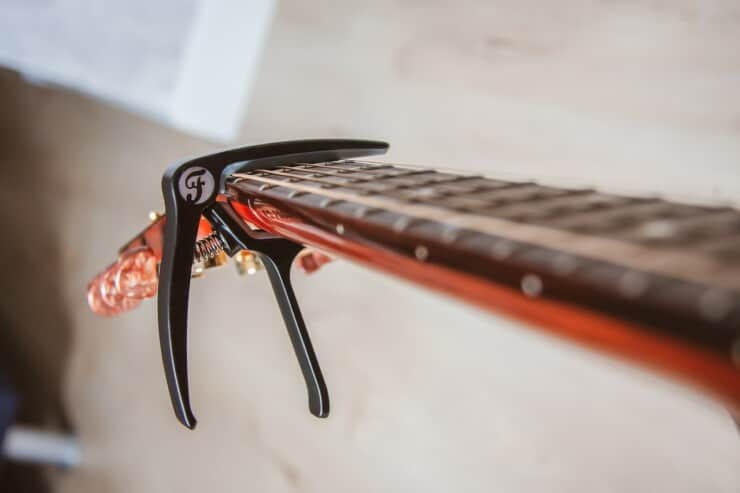
Types of Guitar Capos
There are several types of guitar capos available, each with its own unique features and benefits. It’s important to choose the right type of capo for your needs to ensure that you get the best sound quality possible. Here are the most common types of guitar capos:
Spring-Loaded Capos
Spring-loaded capos are the most common type of capo and are often used in a variety of playing styles and genres. They’re affordable, easy to use, and can be adjusted quickly and easily.
Strap Capos
Strap capos offer a unique alternative to traditional capos and are often used by fingerstyle guitarists. They’re ideal for players who want to experiment with alternate tunings and playing techniques.
Screw-On Capos
Screw-on capos offer a secure hold and can be adjusted to fit different neck widths. They’re often used by professional musicians and offer superior sound quality compared to other types of capos.
Importance of Guitar Capos
A good guitar capo is essential for unlocking new possibilities in your playing. Here are some reasons why a guitar capo is an important part of any guitarist’s setup:
Alternate Tunings
A guitar capo can be used to create alternate tunings, allowing you to experiment with different sounds and playing techniques.
Transposing Keys
A guitar capo can be used to transpose the key of a song, making it easier to play in different keys and creating new sounds.
Chord Shapes
A guitar capo can be used to create new chord shapes, making it easier to play difficult chords and creating new sounds.
Tips for Using a Guitar Capo
To get the most out of your guitar capo, here are some tips to keep in mind:
Choose the Right Capo
Choose a guitar capo that’s the right type and size for your needs. Consider your playing style and the type of music you play when choosing a capo.
Experiment with Different Positions
Try using your capo in different positions on the neck to create different sounds and chord shapes.
Practice Proper Placement
Make sure you place your capo properly on the neck to ensure that your guitar stays in tune and your playing sounds clear and consistent.
Our Guitar Capo Reviews and Guides
We offer a range of guides and reviews to help you choose the right guitar capo for your needs. Whether you’re looking for a spring-loaded capo or a screw-on capo, our guides and reviews cover a range of different types of capos.
We’ve tested and reviewed the best guitar capos on the market, so you can find the perfect one for your playing style and budget. Check out our reviews of the best guitar capos and start unlocking new possibilities in your playing today.
Conclusion
In this article, we’ve covered the top 10 most important guitar gear you need to take your playing to the next level. We’ve discussed the importance of guitar amplifiers, pedals, tuners, strings, picks, cases, straps, cables, stands, and capos, and provided tips on how to choose the right gear for your playing style and genre.
Remember, having the right gear can make a big difference in your playing. Whether you’re looking to improve your sound quality, experiment with new sounds, or protect your instrument, the right gear can help you achieve your goals.
By investing in the right gear and using it properly, you can take your playing to new heights and unlock new possibilities in your music. So what are you waiting for? Check out our guides and reviews today and start taking your playing to the next level!



